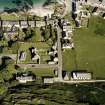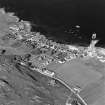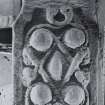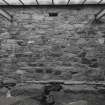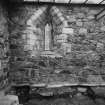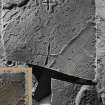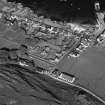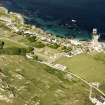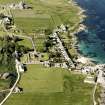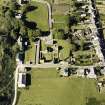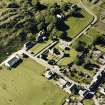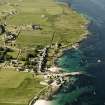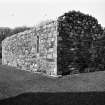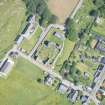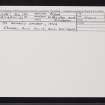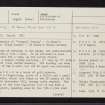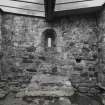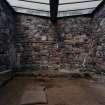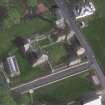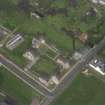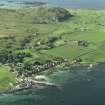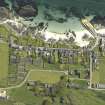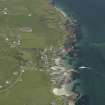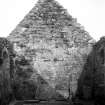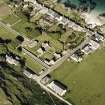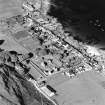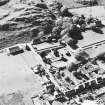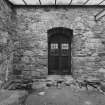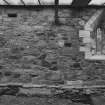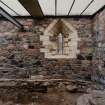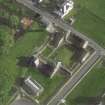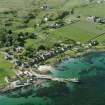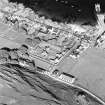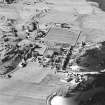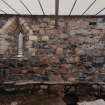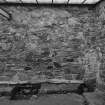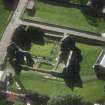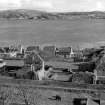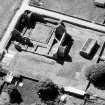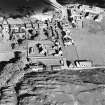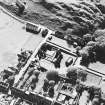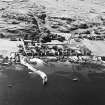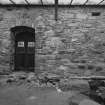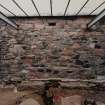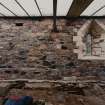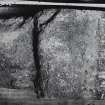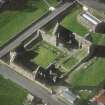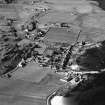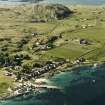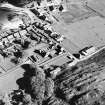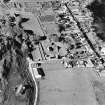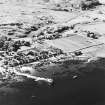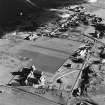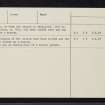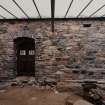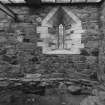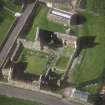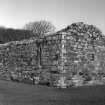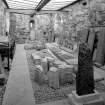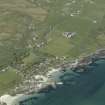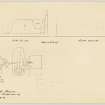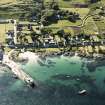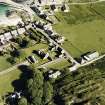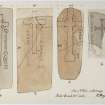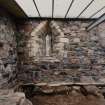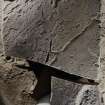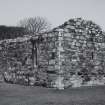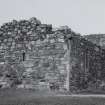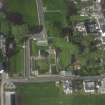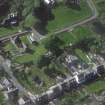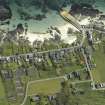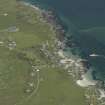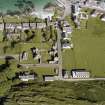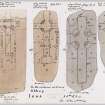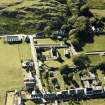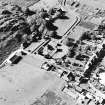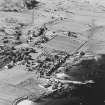Iona, St Ronan's Church
Burial Ground (Medieval), Church (12th Century) - (13th Century), Museum (19th Century) - (20th Century), Hoard, Ring (Gold)
Site Name Iona, St Ronan's Church
Classification Burial Ground (Medieval), Church (12th Century) - (13th Century), Museum (19th Century) - (20th Century), Hoard, Ring (Gold)
Alternative Name(s) Teampull Ronaig; Cladh Ronain, Nunnery Museum
Canmore ID 21630
Site Number NM22SE 22
NGR NM 28498 24128
Datum OSGB36 - NGR
Permalink http://canmore.org.uk/site/21630
First 100 images shown. See the Collections panel (below) for a link to all digital images.
- Council Argyll And Bute
- Parish Kilfinichen And Kilvickeon
- Former Region Strathclyde
- Former District Argyll And Bute
- Former County Argyll
NM22SE 22 28498 24128
(NM 2849 2412) Chapel (NR)
OS 6" map, Argyllshire, 2nd ed., (1900)
NM22SE 22.01 2849 2412 Crosses; Cross-slabs
The remains of "Teampull Ronaig" - St Ronan's Church - with "Cladh Ronain" - St Ronan's Burial Ground, attached.
Its date of erection is not known, but architectural detail suggests a 13th century date. It is believed to have served, at least for a time, as the parish church.
It is a simple oblong building, 37' long by 16' wide internally of plain rubble masonry. The doorway has been in the W end of the N wall, but the NW angle was destroyed by 1896 (MacGibbon and Ross 1896-7).
In the NMAS is a hoard of gold objects, consisting of a finger-ring, parts of a fillet and a small fragment of wire, which were found at the SE corner of the church on 29th September 1923, during earth removal. The circumstances of the find suggested that it had been a temporary deposit, possibly made in the 13th century (See also NM22SE 14). Ronan, to whom the church is dedicated, died in 737. The church, in 1934, had been roofed over and was being used as a museum.
W F Skene 1875; A O Curle 1924; D MacGibbon and T Ross 1887-92; W Reeves 1857; W J Watson 1926; A Ritchie and E Ritchie 1934.
The remains of the church have been roofed and the building now serves as a museum.
There are no indications of a burial ground.
Visited by OS (JP) 8 June 1972
1992 excavations within church by AOC (Scotland), to elucidate floor deposits in advance of possible disturbance during possible renovation as visitor centre. Excavation also revealed post-Medieval burials.
For 1992 discovery of chapel and burial ground beneath this church, see NM22SE 51.
Excavation of the church was undertaken by AOC (Scotland) Ltd on behalf of the Iona Cathedral Trust to facilitate refurbishment of the building as a museum. Excavation recorded several distinct stratigraphic phases on the site. These span a range of activities potentially dating from the Early Christian period to the present day.
The earliest phase consisted of a cemetery of E-W extended inhumations. This was succeeded by a small rectangular building with clay-bonded walls and lime-mortar wall-rendering. This building was replaced by St Ronan's church itself. Upon construction of the church, the walls of the early clay-bonded building were systematically levelled to low butts, and these were then exploited as foundations for the E and S walls of the church. Upon becoming ruinious in the post-reformation years. St Ronan's Church became the repository of a large number of post-medieval burials. In the modern period the church has twice been restored (the present refurbishment will be the third such episode). Excavation has recorded the extent of conservation and reconstruction work carried out variously in the 1870s and in the early 1920s.
Sponsor: Iona Cathedral Trust
J O'Sullivan 1992.
Field Visit (June 1980)
St Ronan's Church, Iona
This building, which appears to have been the medieval parish-church of the island, stands within the precincts of Iona Nunnery, immediately to the N of the nuns' church. In 1923 it was restored and covered with a glass roof to serve as a museum for carved stones brought from the Nunnery and elsewhere. The church is oblong on plan and measures 11.5 m from E to w by 4·7m transversely within walls 0.8m in thickness; the orientation differs somewhat from that of the adjacent nunnery-church. The masonry is of random rubble with dressings of buff-coloured sandstone probably derived from Carsaig, Mull, but many of these have been renewed. The w wall, and likewise the entrance-doorway situated towards the w end of the N wall, have been entirely rebuilt and the original appearance of the doorway is not known (1). The church is lit by a pair of single-light windows placed opposite to one another towards the E end, while a third and smaller single-light opening pierces the centre of the E gable-wall. The N window has been entirely renewed following the pattern of its neighbour on the s side, whose daylight opening has also been extensively restored. The broadly splayed ingoes of the latter opening appear to be original, however, and likewise the triangular-arched head of the embrasure, which closely resembles that of the E window of the N chapel of the Nunnery. The E window is a small round-headed opening of the plainest description with steeply-splayed ingoes; the daylight-opening, which has a width of 0.19m, is rebated, and head, jambs and sill are each formed from a single stone. Beneath the window-sill there may be seen the footings of an altar, while to the s there is a small mural recess for sacramental use, and to the N the stump of a bracket.
A row of graveslabs situated outside the N wall of the church includes one of Early Christian date (RCAHMS 1982 No. 6, 39) , but it is not known whether this, or the other stones of the same period recorded at the Nunnery in the 19th century (e .g., No. 6, 70), have an ancient connection with the site. To judge from the character of the surviving window-openings the church itself probably dates from the late 12th or early 13th century; the plan closely resembles those of Kilchattan Church, Luing (2), and of the 'Michael Chapel' at the Abbey (RCAHMS 1982 pp. 21 , 131).
The earliest historical record of the parish church of Iona appears in 1372, when Pope Gregory XI presented Mactyr, son of John the Judge (Mactyr Johannis Judicis), to fill the vacancy caused by the death some years earlier of theprevious rector, Dominic son of Kenneth (3). Although the parsonage, valued at less than ten merks sterling annually, was apparently independent at this time, in 1561 'the personaige of Tempill-Ronaige' was listed as one of the churches that had belonged to Iona Abbey, and as having been exempted from paying the customary third to the bishop of the Isles (4). Fingon MacMillan was Dean of Mull and minister of Iona in 1573, and although in 1615 the vicarage was held by the minister of Soroby, Tiree, the island again had its own minister in the 1630s. It is not known how long the church remained in use, however, and in the 1640s attempts were made to maintain the former abbey church for parish worship (p. 150). From 1662 to 1829 there was no resident minister, although in the later part of this period intermittent visits were made by the minister of Kilfinichen and Kilvickeon, who officiated in a private house. The fabric of St Ronan's Church was 'entire, but tottering' in 1795, and had become completely ruinous by 1874, when it was consolidated by Anderson (RCAHMS 1982, pp. 151-2).The restoration of the building for use as a museum was carried out at private expense in 1922-3 (5).
RCAHMS 1982, visited June 1980
(1) Dryden's drawings of 1874 (NMRS, AGD/27/1), and Dryden MS 2) show that part of the chamfered base-course of the jambs remained in position at that date.
(2) Inventory of Argyll, 2, No. 256.
(3) Adamnan, Columba (Skene), 356-7.
(4) Coli. de Rebus Alban., 3-4.
(5) Monro. Western Isles, 62; Stat. Acct., 14 (1795), 202;










































































































